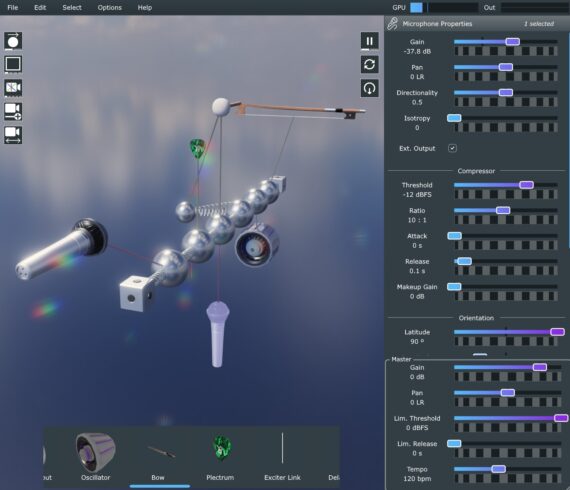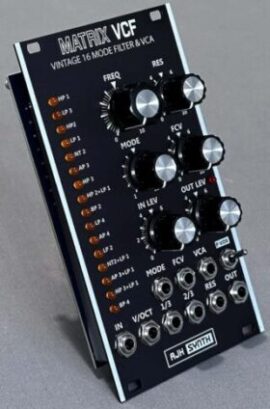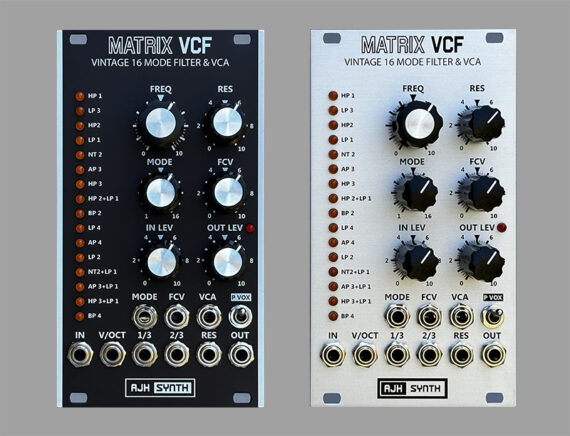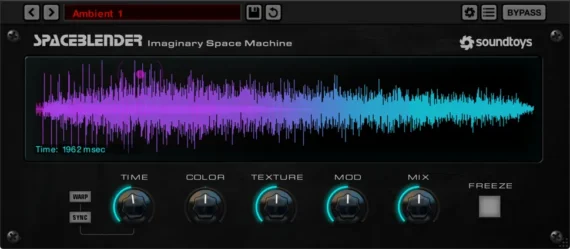Anukari 3D Physics Synthesizer Now Available As Public Beta
Anukari Music has released Anukari, a software synthesizer based on the idea of creating a network of small masses (like little ball bearings, or marbles) connected by springs.
The masses can be vibrated by striking them via MIDI input, or they can be vibrated directly via audio input, so it can act as an effect processor or reverb plugin.

Features:
- Radically New MIDI Instrument – Create a 3D instrument made from masses and springs, and then use your MIDI keyboard to trigger mallets, plectrums, bows, and traditional oscillators.
- Hook up virtual microphones to pick up the sound the 3D instrument makes. You can keep it simple, or build sprawling systems of hundreds of masses.
- Powerful Effects Processor – Anukari can accept audio input signals, either as a sidechain input alongside MIDI or as the primary input. Create 3D audio signal inputs and connect them to the parts of the physics system you want to vibrate, and then pick up the resulting sounds with virtual microphones.
- Full MPE Support – Works with both “legacy” MIDI and Midi Polyphonic Expression (MPE), so you can use a regular MIDI keyboard or your Linnstrument, Roli Seaboard, Haken Continuum, or other favorite MPE controller with Anukari. All MPE inputs can be custom-mapped to modulate arbitrary physics parameters, or left alone with their satisfying defaults so you can just play.
- In addition to the basic physics objects, there are a ton of options for modulation. Powerful sample-accurate LFOs which can operate all the way up to audio frequency for FM. MIDI-triggered envelopes. Envelope followers. The modulation matrix is simple to understand: it’s displayed via physical connections in the 3D world. And nearly every parameter can be modulated.
- Unleash the Power of Your GPU – Anukari processes audio on your graphics card (GPU), so massive compute power is available to you, leaving your CPU power available for other plugins.
- Plugin and Standalone Mode – You can run Anukari in your favorite DAW on Windows or MacOS as a VST3, AU, or AAX plugin, or run it in standalone mode to play it as a MIDI instrument without the complexity of a DAW.
- Anukari only uses a fraction of your GPU’s resources, so you can easily run multiple instances of the plugin in your DAW.
- Tactile Real-Time 3D Interface – You create the instrument’s physics layout in an intuitive 3D editor, and then see how it vibrates, flexes, spins, and moves in real-time as you play it.
- ‘Unbelievable’ Reverbs – Run external audio sources through any shape of spring system you can think of. Tune the parameters to get dark industrial caverns or crashing plates. Modulate the physics parameters with an LFO to get swirling reverb, and add delay lines for slapback or feedback effects.
- Custom 3D Visuals – Anukari has support for loading fully custom skyboxes and 3D models. Using 3D modeling software like Blender, advanced users can completely replace the 3D visuals, including the animations.
Anukari is now available as a beta release, with a discounted price of $70 (normally $140).




